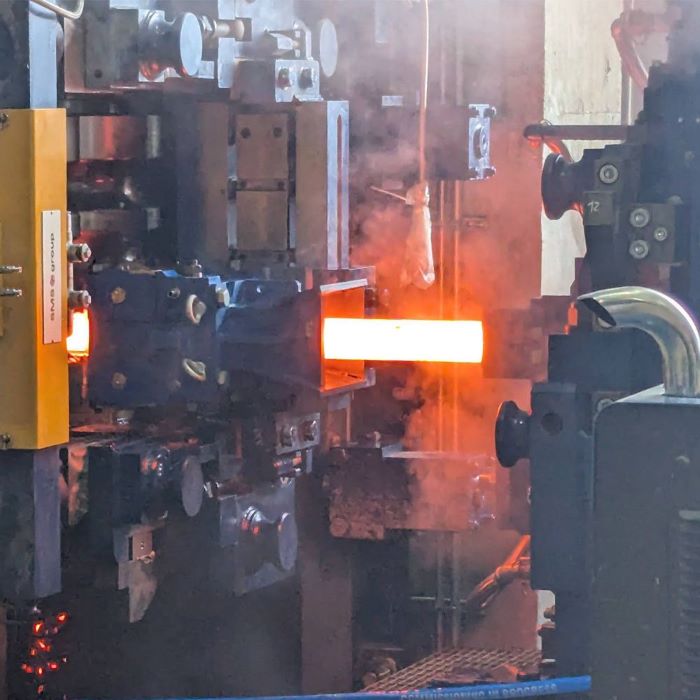Analysis

October 27, 2025
Hot-rolled market anticipates no change despite mill mark-ups
Written by Kristen DiLandro
Domestic sheet market participants say recent spot price hikes from NLMK USA and Nucor will do little to shake-up stagnant market conditions.
Price increases in the current market
On Friday Oct. 24, NLMK customers learned that the producer’s hot- and cold-rolled prices increased $50 per short ton (st) and its coated products were $100/st higher. Nucor added $10/st to its HR consumer spot price (CSP) on Monday, Oct. 27.
NLMK customers told SMU they weren’t surprised by the price increase, given its reliance on steel slab imports to support its operations. NLMK’s substrate costs have been directly impacted as a result of a 50% tariff bump under Section 232. Meanwhile, slab-producing domestic steelmakers use their capacity to service their own customers.
Sources say the market is not dictated by current prices. They contend that only consistent sales from steady demand will stimulate buyers to stock up. Lower prices are not incentivizing buyers since service centers and distributors fear not being able to sell the inventory.
Asked whether NLMK will have to prioritize slab use to support production of its contract tons, and will therefore have fewer spot tons, which could elevate prices, sources all said overall market supply is flush. With supply currently steady, it’s unlikely there would be a spot ton shortage from their perspectives.
As for the increase from Nucor, sources say the Charlotte, N.C.-headquartered producer is sending two psychological signals. First, it stands with other producers. Elevating its price demonstrates that if consumers come to Nucor for products they can’t get from NLMK, they are not being given a dramatically lower price, souring customers to NLMK permanently. Second, sources believe Nucor wants the market to accept its current price and not anticipate decreases any time soon.
Market sources weigh in
One veteran steel analyst sees simultaneous macro factors challenging the market. He says that NLMK’s slab conundrum will pose a hurdle for them, while Nucor’s price increase is an attempt to tack on to any upward momentum.
“NLMK is between a rock and a hard place. Nucor is simply using this as an opportunity to try and tag along/force what has been a noticeably stagnant marketplace, if only to support an image that the market is turning,” he said.
He added that demand is not showing any sign of turning around, and that’s a critical component of the market equation.
“These price increase attempts are a force-feed within a relatively weak and uncertain market environment (there’s that word again – uncertainty). Looking at the supply/demand algorithm, however, the demand factor continues to drive the bus.”
A Midwestern-based service center operator expects the market will start to add demand once projects like large commercial construction and data center projects begin.
“The demand has to be there. It’s not right now. Come first quarter, I think you’re going to start to see some projects come online in the warmer regions. We will probably see a spike toward the end of Q1,” he said.
This week, he said sales remain stable and steady, but at a lower rate than he’d prefer.
“My inventory has never been so low, and I have never slept so well. We’re doing alright. We’ve been buying what we need. I know if I buy steel I’m not going to be up all night worrying about how I’m going to get rid of it,” he added.
A West Coast service center associate said he thinks other mills will start to follow NLMK and Nucor’s lead because the goal is to raise prices overall.
“I think it’s an attempt on Nucor’s part to get pricing up incrementally. I understand that Nucor doesn’t do all the discounting that other mills do, hence if they are rigid in their negotiations and raise prices $10/st, then it’s that much more money they are making,” he said.
Like the Midwestern source, the West Coast-based participant also noted the psychology of increasing prices.
“It’s psychological, to get customers to think prices are rising. Yet customers know that their business is slow. Sometimes it’s hard to figure out Nucor’s logic,” he said.
A second Midwest-based service center source added that the price increase was the first in months. A significant shift for him because prices have continued to be stable throughout the greater part of the year.
“First notice I’ve seen in months! I think it is too early to tell if it will have any effect on the market at all. If no one else jumps on the bandwagon, it will only affect the spot buys from NLMK,” he said.
Prices and comparisons
In SMU’s last price assessment, the average price of HR was $805/st. During the equivalent week of 2024, HR spot prices were assessed at $685/st.
All prices are ex-works domestic mill prices unless otherwise noted.







